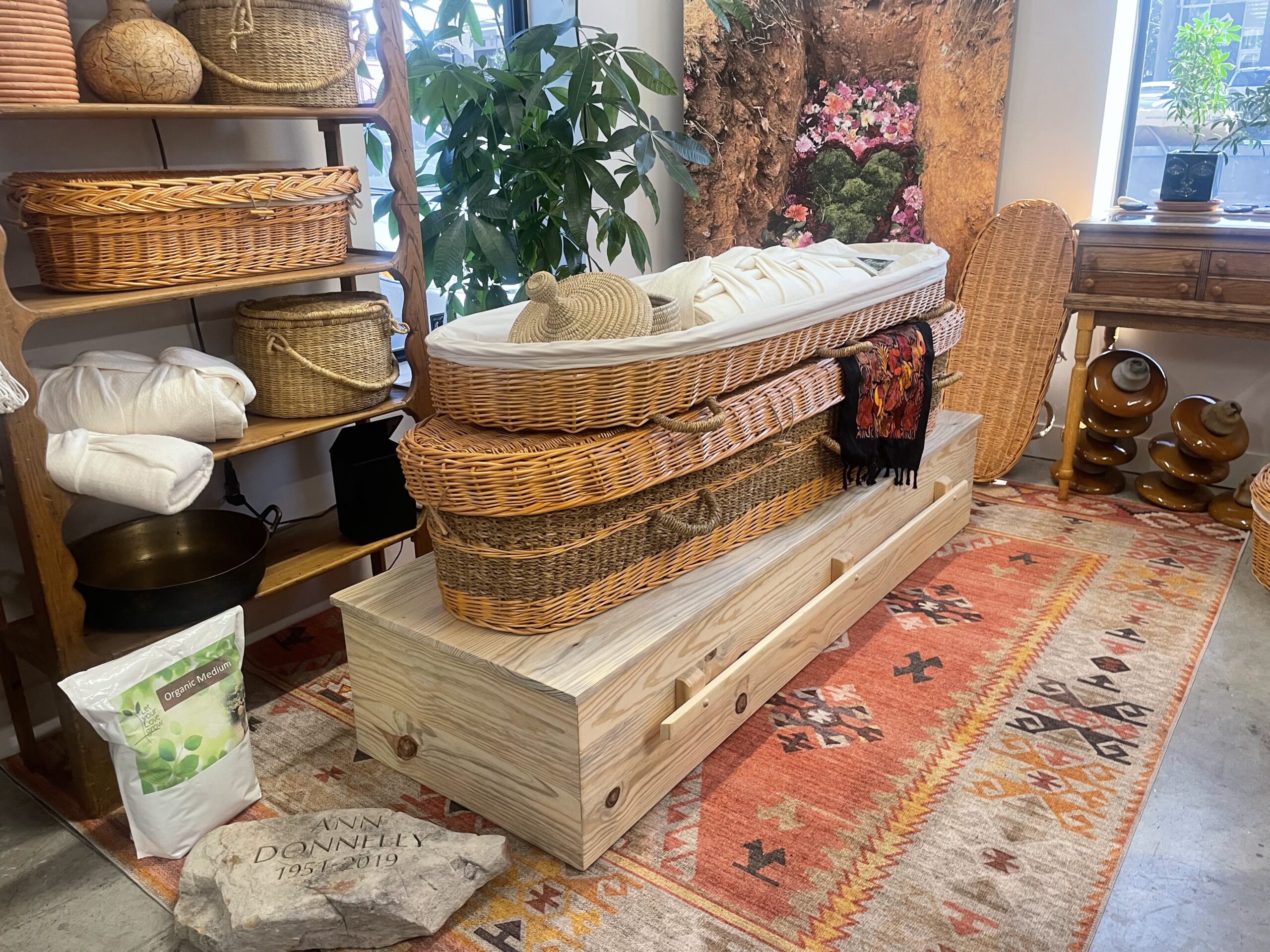When second year students Joanne Ying, Christin Sanchez, and Taylor Zekoski joined Professor Kevin Galloway’s “How to Make Almost Anything and Make it Matter” course, they never imagined it would lead to the design of a more sustainable wooden casket.

"Part of this class is really trying to give the students an immersive experience where they can connect with real world challenges and design for actual clients," said Kevin Galloway, Director of Making at the Wond’ry and Research Associate Professor in Mechanical Engineering, Vanderbilt University. His class teaches students essential design thinking and prototyping skills that they can then use in a real life project with a Nashville community partner.
Peabody student Joanne Ying said, “My team was initially drawn to this project because of its focus on improving sustainability and reducing carbon footprints in a city that we would be calling home until we graduate.” Their client, Larkspur Conservation, is a local nonprofit that aims to use natural burial practices to preserve and restore the land across Tennessee.

The project was more than a task; it was a journey to Larkspur’s heart, where they discovered the company’s dream of a greener farewell. The team’s vision? A wooden casket that returns to the earth as seamlessly as the seasons change, without leaving a trace. They envisioned a design free from metal screws, that embraced the earth with every fiber of its being, resonating with Larkspur’s mission of land conservation and sustainability.

A key aspect of their design process was the emphasis on local materials and artisans by utilizing saw mills, lumber yards, artisans and carpenters. By prioritizing materials sourced from within the community, Joanne, Christin, and Taylor sought to minimize the environmental impact associated with transportation and production, aligning their project with broader sustainability goals.
As the project progressed, the trio's prototypes began to take shape, each iteration bringing them closer to realizing their vision of a sustainable farewell. From initial sketches to the final design, their journey was a testament to the power of innovation, collaboration, and a shared commitment to making a difference.
“The design process for these sustainable caskets was incredibly fulfilling and a true embodiment of the human-centered design principles we learned in our course," reflected Engineering student Taylor Zekoski. “Engaging in rapid prototyping and experimenting with different concepts allowed us to not only hone our skills but also to directly contribute to a cause that is much bigger than ourselves. By focusing on sustainability and helping others through our designs, we were able to create a prototype concept that not only respects the environment but also provides a meaningful and eco-friendly farewell.”